Home>Interior Design>Zen Bedroom Ideas: 10 Blissful Schemes For Rest
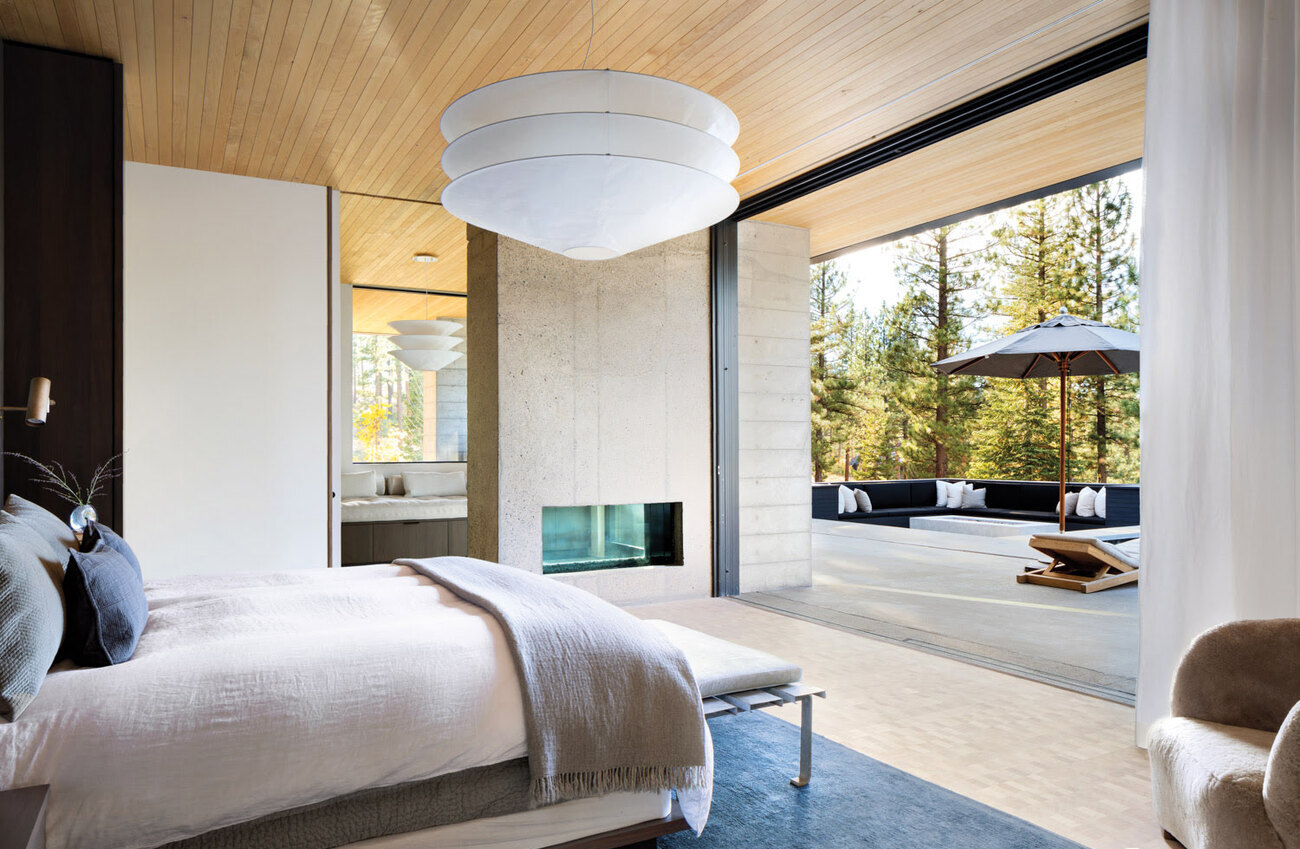

Interior Design
Zen Bedroom Ideas: 10 Blissful Schemes For Rest
Modified: January 5, 2024
Discover 10 serene and soothing Zen bedroom ideas that will transform your space. Enhance your interior design with blissful schemes for ultimate rest.
(Many of the links in this article redirect to a specific reviewed product. Your purchase of these products through affiliate links helps to generate commission for Storables.com, at no extra cost. Learn more)
Introduction
Welcome to the world of Zen bedroom ideas, where tranquility and serenity take center stage. A Zen bedroom is a haven of peace and calm, where you can retreat from the noise and stresses of daily life and find solace in a soothing and balanced environment. Whether you are a fan of minimalist aesthetics, drawn to nature-inspired elements, or seeking the Zen principles of Japanese design, there are endless possibilities to create your blissful sanctuary.
In this article, we will explore ten Zen bedroom ideas that will help you transform your sleeping space into a peaceful oasis. From minimalist designs to nature-inspired themes, we will guide you through the essential elements and techniques to bring a sense of Zen to your bedroom.
By incorporating these ideas, you will not only create a visually appealing and harmonious ambiance, but also promote restful sleep and a sense of well-being. So, let’s dive in and discover the art of designing a Zen bedroom that resonates with your personal style and promotes a peaceful mind and body.
Key Takeaways:
- Embrace tranquility and balance in your bedroom by incorporating minimalist designs, nature-inspired elements, and Japanese Zen principles to create a serene and harmonious environment that promotes restful sleep and well-being.
- Infuse your Zen bedroom with personal style, mindful organization, and soothing lighting to create a peaceful sanctuary that nurtures calmness, relaxation, and balance, allowing for rest, rejuvenation, and mindfulness.
Minimalist Zen Bedroom
A minimalist Zen bedroom is all about simplicity, minimalism, and creating a space free from distractions. It embraces the concept of “less is more” and focuses on essential elements that promote a sense of calm and relaxation. Here are the key aspects of a minimalist Zen bedroom:
Elements of a minimalist Zen bedroom
A minimalist Zen bedroom is characterized by clean lines, uncluttered spaces, and a sense of balance. It avoids excessive ornamentation and embraces simplicity in design. Here are some elements to consider:
- Minimalist furniture: Opt for furniture pieces with simple and sleek designs. Choose beds, dressers, and nightstands with clean lines and minimal detailing.
- Simple bedding: Stick to neutral tones and simple patterns for your bedding. Choose fabrics that are soft and breathable, such as cotton or linen.
- Clear surfaces: Keep surfaces clutter-free, with only a few essential items on display. Use minimal decorative objects or opt for functional pieces that serve a purpose.
- Muted color palette: Choose neutral and earthy colors for your walls, such as whites, beiges, and light greys. These colors create a soothing and peaceful atmosphere.
Choosing neutral and earthy colors
Color has a powerful impact on our emotions and can greatly influence the atmosphere of a room. In a minimalist Zen bedroom, selecting the right color palette is crucial. Neutral and earthy colors are ideal for creating a sense of calm and tranquility.
Consider using shades of white, beige, taupe, and soft greys for your bedroom walls. These colors evoke a feeling of serenity and provide a neutral backdrop for other elements in the room.
When it comes to furniture and décor, opt for natural materials like wood and bamboo, which further enhance the Zen aesthetics. You can also incorporate pops of color through accent pieces, such as cushions or artwork, in soothing tones like pale blues or muted greens.
Decluttering and simplifying your space
Embracing minimalism means getting rid of excess clutter and keeping only the essentials. Decluttering your space not only creates a visually appealing environment but also promotes a peaceful mindset.
Start by assessing your belongings and getting rid of items that are unnecessary or no longer serve a purpose. Create organized storage solutions for items you want to keep but don’t necessarily want on display.
Consider integrating built-in storage solutions to minimize visual clutter. Opt for furniture pieces with hidden storage compartments or utilize wall shelves to keep your belongings neatly organized.
Simplify your bedroom décor by focusing on a few well-chosen pieces that align with the Zen aesthetics. Avoid overcrowding your space with too many decorative items and choose ones that have personal significance or bring you a sense of joy and peace.
A minimalist Zen bedroom embraces an uncluttered and simplified approach to design, allowing you to create a serene and calming sanctuary in which to rest and recharge.
Nature-Inspired Zen Bedroom
Bringing the beauty of nature into your bedroom can create a soothing and rejuvenating atmosphere. A nature-inspired Zen bedroom celebrates the elements of the natural world, promoting a sense of calm and harmony. Here are some key aspects of creating a nature-inspired Zen bedroom:
Incorporating natural elements into your bedroom
To establish a nature-inspired Zen bedroom, it is essential to incorporate natural elements into the design. This can be achieved through the choice of materials, textures, and décor items. Here are some ideas:
- Wooden furniture: Opt for furniture made from natural and sustainable materials, such as wood or bamboo. These materials impart warmth and earthiness to your bedroom.
- Natural fibers: Choose bedding, curtains, and rugs made from organic materials like cotton or linen. These natural fibers are breathable, promoting a comfortable and serene sleeping environment.
- Stone accents: Consider incorporating stone accents, such as pebble tiles or a stone feature wall, to add a touch of nature-inspired texture to your bedroom.
Using organic materials for furniture and décor
In a nature-inspired Zen bedroom, it’s important to prioritize organic and eco-friendly materials for your furniture and décor. These materials not only align with the principles of sustainability but also create a connection to the natural world. Here are some suggestions:
- Natural wood furniture: Opt for handmade or reclaimed wood furniture to bring a rustic and organic touch to your bedroom. Look for pieces with simple and clean designs.
- Organic textiles: Choose beddings, curtains, and throws made from organic cotton or linen. These materials are not only environmentally friendly but also feel soft and luxurious against the skin.
- Natural fiber rugs: Place a natural fiber rug, such as jute or sisal, on the floor to add warmth and texture to your bedroom while maintaining the nature-inspired theme.
Creating a calming atmosphere with plants
Adding plants to your nature-inspired Zen bedroom can create a calming and refreshing atmosphere. Plants not only purify the air but also bring a sense of vitality and beauty to your space. Here are some tips for incorporating plants into your bedroom:
- Choose low-maintenance plants: Select plants that are easy to care for and thrive in indoor environments, such as snake plants, peace lilies, or ZZ plants.
- Place plants strategically: Position plants near windows to maximize natural light and create a connection between the indoors and outdoors. You can also place them on bedside tables or shelves for added greenery and visual appeal.
- Create a vertical garden: If you have limited space, consider creating a vertical garden using wall-mounted planters. This not only adds a unique design element but also maximizes the presence of plants in your bedroom.
A nature-inspired Zen bedroom allows you to embrace the beauty of the natural world, fostering a sense of tranquility and peace in your space. By incorporating natural materials, textures, and plants into your design, you can create a serene environment that promotes restful sleep and rejuvenation.
Japanese Zen Bedroom
Japanese design principles have long been associated with Zen aesthetics, emphasizing simplicity, harmony, and a deep connection to nature. A Japanese Zen bedroom embodies these principles, creating a serene and contemplative space for relaxation and rejuvenation. Here are the key aspects of designing a Japanese Zen bedroom:
Japanese design principles for a Zen bedroom
Japanese design principles embrace minimalism, balance, and a reverence for nature. When creating a Japanese Zen bedroom, keep the following principles in mind:
- Wabi-Sabi: Embrace the concept of Wabi-Sabi, which celebrates imperfections, simplicity, and the beauty of natural materials. This principle emphasizes the acceptance of transience and the appreciation of the present moment.
- Miyabi: Incorporate Miyabi, which refers to elegance, refinement, and sophistication. This principle emphasizes the use of high-quality materials, craftsmanship, and attention to detail.
- Ma: Consider the concept of Ma, which refers to the importance of negative space and the intervals between objects. Create a sense of balance and tranquility by allowing ample space between furniture and décor elements.
Tatami flooring and shoji screens
Tatami flooring and shoji screens are quintessential elements of a Japanese Zen bedroom, adding authenticity and charm to the overall design.
Tatami is a traditional Japanese flooring material made from woven rush grass. Its natural texture and aroma create a sense of warmth and comfort. Consider incorporating tatami flooring or tatami mats to bring an authentic Japanese touch to your bedroom. Not only does it provide comfort underfoot, but it also adds a layer of natural elements to the space.
Shoji screens, made of wooden frames and paper panels, are used as sliding doors or room dividers in Japanese homes. These screens allow diffused light to pass through and create a gentle and serene ambiance. Incorporate shoji screens to add a traditional Japanese aesthetic to your Zen bedroom while maintaining an open and airy feel.
Zen-inspired furniture and accessories
When selecting furniture and accessories for your Japanese Zen bedroom, prioritize simplicity, clean lines, and natural materials. Here are some ideas:
- Futon or low-profile bed: Opt for a futon or a low-profile platform bed to maintain a sense of simplicity and connection to the Japanese aesthetic. Choose a bed frame made of wood, preferably with minimal decoration.
- Shoji-inspired closet doors: Replace conventional closet doors with shoji-inspired sliding doors. These doors not only enhance the Japanese influence but also contribute to the overall Zen atmosphere.
- Bamboo and rice paper lamps: Incorporate bamboo or rice paper lamps to provide soft and diffused lighting. These lamps create a warm and calming glow, perfect for a Zen bedroom.
- Minimalist décor: Limit decorative items to a few carefully selected pieces. Choose items that reflect the Japanese aesthetic, such as a bonsai tree, ikebana flower arrangements, or Zen-inspired artwork.
A Japanese Zen bedroom reflects the simplicity, balance, and harmony of Japanese design. By incorporating tatami flooring, shoji screens, and minimalist furniture and accessories, you can create a tranquil and authentic atmosphere that promotes a sense of Zen and well-being.
Zen Meditation Bedroom
A Zen meditation bedroom is designed to create a serene and tranquil space for practicing mindfulness and relaxation. It provides a dedicated area for meditation, allowing you to cultivate a sense of calm and inner peace. Here are the key aspects of setting up a Zen meditation corner in your bedroom:
Setting up a meditation corner in your bedroom
Dedicating a specific area in your bedroom for meditation helps to establish a sense of focus and tranquility. Here are some tips for creating your meditation corner:
- Choose a quiet spot: Select a corner of your bedroom that is away from distractions and noise. Ideally, this area should receive natural light or can be illuminated with soft lighting.
- Clear the space: Remove any clutter or unnecessary items from the designated meditation corner. Keep the area clean and organized to promote a sense of calm and clarity.
- Add a focal point: Consider placing a low table or a small altar in your meditation corner. This can serve as a focal point for your practice and can be adorned with meaningful objects or symbols.
Using cushions and mats for comfortable seating
Comfortable seating is crucial for a Zen meditation practice, as it allows you to maintain a proper posture while sitting for extended periods. Here’s how you can create a comfortable seating arrangement:
- Meditation cushions: Invest in a meditation cushion or zafu, which provides support for your hips and helps to maintain a comfortable and aligned sitting position. Place it on a traditional tatami mat or a soft rug.
- Meditation mat: Consider using a meditation mat or zabuton, which provides additional cushioning and support for your knees and ankles. This can be placed beneath the meditation cushion for added comfort.
- Blankets or bolsters: Depending on your preferred meditation posture, you may want to have additional blankets or bolsters on hand for added support or comfort.
Creating a peaceful ambiance with soft lighting and candles
The ambiance of your meditation space plays a significant role in setting the right mood for practice. Here are some tips for creating a peaceful atmosphere:
- Soft lighting: Opt for soft, warm lighting in your meditation corner. Consider using lamps with adjustable dimmers to control the intensity of the light. Natural light is also beneficial, so try to position your meditation corner near a window.
- Candles: Incorporate candles in your meditation space to create a soft and calming glow. Choose unscented candles or those with scents like lavender or sandalwood, known for their relaxing properties.
- Incense or essential oils: Use natural incense sticks or essential oils to infuse your meditation space with soothing aromas. Popular choices include sandalwood, frankincense, or lavender.
- Soundscape: Consider playing gentle and ambient sounds, such as nature sounds or meditation music, to create a tranquil soundscape that helps to deepen your meditation practice.
A Zen meditation bedroom provides a quiet and serene space for self-reflection, mindfulness, and relaxation. By setting up a dedicated meditation corner, using cushions and mats for comfortable seating, and creating a peaceful ambiance with soft lighting and candles, you can cultivate a serene sanctuary within your own bedroom.
Zen Minimalist Color Schemes
In a Zen minimalist bedroom, color plays a crucial role in creating a serene and harmonious atmosphere. The choice of color scheme sets the tone for the space and has a significant impact on your overall well-being. Here are some key points to consider when selecting a Zen minimalist color scheme:
Neutral color palette for a serene atmosphere
A neutral color palette forms the foundation of a Zen minimalist bedroom. Neutral colors have a calming and soothing effect, creating a serene and balanced atmosphere. Here are some popular choices:
- Whites: Shades of white, such as ivory, off-white, or cream, evoke a sense of purity and cleanliness. They bring a light and airy feel to your bedroom, promoting a peaceful ambiance.
- Beiges: Soft beige tones create a warm and earthy atmosphere. They have a grounding effect, connecting you to nature and creating a sense of tranquility.
- Greys: Light shades of grey, like dove grey or silver, add a touch of sophistication and elegance to your Zen bedroom. They provide a neutral backdrop for other elements and harmonize well with natural textures.
By using a neutral color palette, you can create a serene and timeless environment that promotes relaxation and mindfulness.
Shades of white and beige for a tranquil setting
Within the spectrum of neutral colors, shades of white and beige are particularly well-suited for a Zen minimalist bedroom. They have a light and airy quality that enhances the feeling of tranquility. Here’s how you can incorporate these colors:
- Walls: Paint the walls in shades of white or light beige to establish a calming and open backdrop. Consider using matte or eggshell finishes to create a soft and soothing texture.
- Bedding: Choose crisp white or creamy beige bed linens to create a fresh and inviting atmosphere. Opt for natural textures like cotton or linen for an added touch of luxury.
- Furniture: Select furniture with clean lines and a neutral color palette. Light wood tones or white furniture pieces can enhance the minimalist aesthetic while maintaining a sense of tranquility.
Shades of white and beige work harmoniously together to create a serene and tranquil setting in your Zen minimalist bedroom.
Adding pops of calming colors like light blue or green
While a neutral color palette forms the foundation of a Zen minimalist bedroom, adding pops of calming colors can bring depth and visual interest to the space. Consider incorporating muted shades of light blue or green to enhance the tranquil atmosphere:
- Light blue: Soft shades of blue, reminiscent of clear skies or calm waters, have a calming and cooling effect. They create a sense of serenity and promote relaxation.
- Green: Shades of green, inspired by nature, instill a feeling of freshness and harmony. Light greens, such as sage or mint, can create a sense of balance and provide a connection to the natural world.
You can introduce these calming colors through accent pieces such as pillows, throws, or artwork. These subtle touches of color evoke a sense of serenity while remaining in harmony with the overall minimalist aesthetic.
A Zen minimalist color scheme embraces neutral tones for a serene ambiance, with shades of white and beige establishing a tranquil setting. Adding pops of calming colors like light blue or green brings depth and visual interest to your Zen minimalist bedroom, enhancing the overall sense of peace and tranquility.
Feng Shui Zen Bedroom
A Feng Shui Zen bedroom combines the principles of Feng Shui with Zen aesthetics to create a harmonious and balanced space. By applying Feng Shui principles to your bedroom layout, you can enhance the flow of energy and create a peaceful environment. Here are key aspects of creating a Feng Shui Zen bedroom:
Applying Feng Shui principles to your bedroom layout
Feng Shui is an ancient Chinese practice that focuses on the arrangement and flow of energy, known as qi. When applied to your bedroom, it can promote balance, relaxation, and positive energy. Here are some guidelines to consider:
- Bed placement: Position your bed in a commanding position where you have a clear view of the bedroom door, but avoid being directly in line with it. This placement promotes a sense of security and allows for optimal energy flow.
- Clutter-free space: Keep your bedroom clutter-free and organized. Clutter can block the flow of energy and create a sense of unease. Create dedicated storage spaces for belongings to maintain a clean and peaceful environment.
- Good air circulation: Ensure proper air circulation in your bedroom. Open windows regularly to let fresh air in and use air purifying plants to improve the air quality. Good air flow is vital for promoting a healthy and harmonious atmosphere.
Balancing the energy flow with strategic furniture placement
The placement of furniture in your Feng Shui Zen bedroom is essential for maintaining balance and harmony. Here are some tips for strategic furniture placement:
- Bedroom door and pathway: Keep the pathway from the bedroom door to the bed clear of obstacles to allow energy to flow freely. Avoid placing furniture in the direct line of this pathway.
- Balance and symmetry: Create a sense of balance and symmetry in your bedroom by placing matching nightstands, lamps, or artwork on either side of the bed. This promotes harmony and stability in the space.
- Avoid sharp edges: Choose furniture with rounded edges whenever possible. Sharp edges can create harsh energy and disrupt the flow of qi. Opt for curved or rounded furniture designs for a softer and more soothing atmosphere.
Incorporating harmonious elements for a peaceful space
In a Feng Shui Zen bedroom, incorporating elements that bring a sense of harmony and serenity is essential. Here are some elements to consider:
- Natural materials: Use natural materials like wood, stone, or bamboo for furniture and decor. These materials connect your bedroom to the natural world, promoting a sense of peace and balance.
- Soft lighting: Opt for soft and warm lighting in your Feng Shui Zen bedroom. Use lamps with dimmers to create a cozy and relaxing ambience. Soft lighting helps to promote a peaceful and tranquil atmosphere.
- Earthly colors: Choose soothing and earthy colors for your walls and décor. Earth tones like beige, brown, and soft greens promote a grounded and harmonious environment.
- Symbols of Zen: Incorporate symbols of Zen, such as a Buddha statue, a Zen garden, or a calming artwork, to further enhance the Zen ambiance and promote mindfulness and relaxation.
A Feng Shui Zen bedroom promotes a harmonious and peaceful space where positive energy can flow freely. By applying Feng Shui principles to your bedroom layout, balancing the energy flow with strategic furniture placement, and incorporating harmonious elements, you can create a Zen-inspired sanctuary that promotes balance, relaxation, and well-being.
Zen Bohemian Bedroom
A Zen bohemian bedroom merges the tranquility of Zen principles with the free-spirited and eclectic aesthetics of bohemian style. This combination creates a harmonious and cozy space that reflects your unique personality and promotes relaxation. Here are the key elements of designing a Zen bohemian bedroom:
Combining Zen principles with bohemian aesthetics
The Zen bohemian style harmoniously blends the simplicity and mindfulness of Zen design with the vibrant and artistic elements of bohemian aesthetics. Here’s how you can combine these two styles:
- Minimalism: Embrace minimalist design principles by keeping the space uncluttered and focusing on essential pieces. This lays the groundwork for a Zen atmosphere.
- Free-spirited decor: Introduce bohemian elements by incorporating colorful textiles, unique patterns, and an eclectic mix of furniture and accessories.
- Natural materials: Opt for natural fabrics, such as cotton, linen, or jute, in your bedding, curtains, and rugs. Add wooden or rattan furniture to bring an organic and grounding feel to the space.
Layering textures and patterns for a cozy atmosphere
Layering textures and patterns is a key aspect of a Zen bohemian bedroom. It adds depth, warmth, and comfort to the space. Here’s how you can achieve this cozy atmosphere:
- Textiles: Use an assortment of textiles, such as soft blankets, plush rugs, and decorative pillows, to layer and create a cozy feeling. Mix and match different textures like velvet, woven fabrics, and knits for added visual interest.
- Patterns: Introduce patterns through rugs, curtains, and bedding. Choose patterns that resonate with your bohemian style, such as geometric prints, floral motifs, or ethnic-inspired designs. Make sure to balance the patterns with solid colors to avoid overwhelming the space.
- Wall hangings: Decorate your walls with tapestries, macrame, or woven art pieces. These bohemian-inspired wall hangings contribute to the cozy and artistic vibe of the room.
Incorporating personal and meaningful objects into your décor
A Zen bohemian bedroom is an opportunity to express your personal taste and incorporate meaningful objects. Here’s how you can infuse your space with elements that hold significance for you:
- Travel souvenirs: Display items collected during your travels, such as unique trinkets, artwork, or textiles, to add a sense of adventure and nostalgia to the room.
- Handmade creations: Showcase handmade or DIY items, such as paintings, pottery, or dreamcatchers, that reflect your artistic side and add a personal touch to the décor.
- Plants and greenery: Bring nature indoors by incorporating houseplants into your Zen bohemian bedroom. They not only add a fresh and vibrant element but also contribute to the overall calming and Zen ambiance.
- Memories and mementos: Arrange meaningful photographs, letters, or sentimental objects in a dedicated spot, such as a gallery wall or a display shelf, to remind you of cherished memories and create an emotional connection to the space.
A Zen bohemian bedroom embraces a harmonious fusion of Zen principles and bohemian aesthetics. By combining minimalism with free-spirited decor, layering textures and patterns, and incorporating personal and meaningful objects, you can create a cozy and unique sanctuary that reflects your individuality and promotes relaxation.
Zen Zenith Bedroom
A Zen zenith bedroom combines the serene aesthetics of Zen design with modern and luxurious elements. It creates a space that exudes a sense of peace and tranquility while incorporating sleek and sophisticated touches. Here are key elements to achieve a Zen zenith bedroom:
Achieving Zen aesthetics in a modern and luxurious bedroom
A Zen zenith bedroom strikes a balance between the simplicity of Zen design and the refined elegance of a luxurious space. Here’s how you can achieve this harmonious combination:
- Clean lines and simplicity: Choose furniture pieces with clean lines and minimalistic designs. Opt for sleek and modern fixtures that maintain a sense of simplicity and Zen aesthetic.
- Elegant color palette: Select a sophisticated and neutral color palette that evokes a sense of calm and balance. Shades such as soft whites, muted greys, or warm taupes can create a timeless and luxurious atmosphere.
- Quality materials: Incorporate high-quality materials such as leather, marble, or polished wood to add a luxurious touch to your Zen zenith bedroom. These materials not only elevate the overall aesthetic but also provide a sense of opulence and refinement.
Utilizing sleek and minimalistic furniture designs
In a Zen zenith bedroom, furniture choices play a crucial role in achieving a modern and luxurious look. Here are some tips for selecting sleek and minimalistic furniture designs:
- Platform bed: Opt for a low-profile platform bed with a simple design and clean lines. Look for a bedframe with luxurious upholstery or polished wood finish to add a touch of elegance.
- Minimalistic storage solutions: Choose sleek and minimalistic dressers, nightstands, and shelving units that offer a clutter-free and organized look. Built-in storage options can help maintain a seamless and minimalist aesthetic.
- Statement pieces: Incorporate a few select statement pieces that anchor the room and add a sense of luxury. Consider a chaise lounge, an accent chair, or an iconic designer lamp to create a focal point and elevate the overall design.
Incorporating high-quality materials for a sense of luxury
To create a Zen zenith bedroom that exudes luxury, it is essential to prioritize high-quality materials. Here are some ideas for incorporating luxurious materials into your space:
- Luxurious bedding: Invest in high-quality bedding made from sumptuous fabrics like Egyptian cotton or silk. Opt for duvet covers, sheets, and pillowcases that have a luxurious feel and provide the utmost comfort.
- Plush area rugs: Place plush and soft area rugs in strategic locations to add warmth and underfoot comfort. Look for rugs made from luxurious materials like wool or silk to enhance the luxurious ambiance.
- Elegant window treatments: Utilize luxurious and refined window treatments, such as velvet curtains or sheer silk drapes, to add an elegant touch while maintaining a sense of tranquility. These materials provide a sense of privacy and contribute to the overall luxurious feel.
A Zen zenith bedroom combines Zen aesthetics with modern luxury to create a serene and elegant space. By utilizing sleek and minimalistic furniture designs, incorporating high-quality materials, and striving for a refined color palette, you can achieve a sophisticated and luxurious atmosphere while staying true to the principles of Zen design.
Zen Bedroom Lighting
Lighting plays a crucial role in setting the atmosphere and creating a tranquil ambiance in a Zen bedroom. Soft and warm lighting creates a calming effect, promoting relaxation and a sense of peace. Here are key aspects to consider when planning the lighting for your Zen bedroom:
Soft and warm lighting for a calming ambiance
A Zen bedroom calls for lighting that creates a soft and warm ambiance, mimicking the gentle glow of natural light. Here are some lighting options to achieve this calming effect:
- Warm-toned bulbs: Opt for warm-toned light bulbs with a color temperature of around 2700K to 3000K. These bulbs emit a yellowish light that creates a cozy and relaxing atmosphere.
- Layered lighting: Incorporate multiple sources of light to create a layered effect, allowing you to adjust the brightness according to your needs. Combine overhead lighting, task lighting, and ambient lighting to achieve a balanced and soothing ambiance.
- Soft light fixtures: Choose light fixtures that diffuse the light to create a gentle and diffused glow. Consider pendant lights with fabric shades, wall sconces with frosted or textured glass covers, or table lamps with soft fabric shades.
Incorporating natural light during the day
Maximizing natural light in your Zen bedroom during the day is essential for creating a sense of connection with the outdoors and promoting a calming atmosphere. Here’s how you can incorporate natural light:
- Uncovered windows: Keep windows uncovered or use sheer or light-colored curtains that allow natural light to filter through. This ensures an unobstructed view and a sense of openness in the room.
- Mirrors: Place mirrors strategically to reflect natural light and create the illusion of a larger space. Position mirrors across from windows or in areas where they can bounce sunlight into the room.
- Sunlight in day-to-day routines: Arrange your furniture and activities in a way that allows you to make the most of natural light during your day-to-day routines. Consider positioning your workspace or reading nook near a window for optimal daylight exposure.
Using dimmers and candles for adjustable lighting options
Having the ability to adjust the lighting levels in your Zen bedroom is important for creating different moods and promoting relaxation. Here are two options to consider:
- Dimmers: Install dimmer switches for overhead lights or wall fixtures. This allows you to easily adjust the brightness of the room, whether you need brighter light for activities or softer light for winding down in the evening.
- Candles: Incorporate candles in your Zen bedroom to create a serene and cozy atmosphere. Use unscented candles made of natural materials like beeswax or soy wax to avoid overpowering scents. Candlelight provides soft and flickering light that adds a peaceful and meditative ambiance.
A well-thought-out lighting plan in your Zen bedroom contributes significantly to the overall serene atmosphere. By incorporating soft and warm lighting, maximizing natural light during the day, and utilizing dimmers and candles for adjustable lighting options, you can create a space that promotes relaxation, tranquility, and a deep sense of peace.
Read more: Beige Room Ideas: 10 Stylish Neutral Schemes
Zen Bedroom Organization and Storage
A Zen bedroom promotes a sense of serenity and tranquility, and maintaining an organized and clutter-free environment is essential to uphold this peaceful ambiance. Here are key principles to help you maximize storage space and keep your Zen bedroom organized:
Maximizing storage space while maintaining a clutter-free environment
A clutter-free environment is essential for a Zen bedroom as it allows for clear thinking and promotes a sense of calm and relaxation. Here are some tips to maximize storage space while keeping your room clutter-free:
- Purge unnecessary belongings: Regularly assess your belongings and let go of items that no longer serve you. Keep only items that bring you joy or serve a practical purpose in your Zen bedroom.
- Organize with intention: Group similar items together and designate specific storage spaces for them. Use baskets, trays, or bins to keep items organized and neatly stored.
- Keep surfaces clear: Avoid cluttering surfaces such as bedside tables or dressers. Limit the number of items displayed and aim for simplicity. Clear surfaces help create a sense of calm and allow for a peaceful atmosphere.
Using minimalist storage solutions and furniture with built-in storage
Minimalist storage solutions and furniture with built-in storage can help you maintain an organized Zen bedroom. Here are some ideas to consider:
- Minimalist shelving units: Choose open, minimalist shelving units to display items that bring you joy or have sentimental value. Be selective with the items you choose to showcase, ensuring they contribute to the serene and balanced atmosphere of your Zen bedroom.
- Furniture with built-in storage: Opt for furniture pieces that offer hidden storage compartments, such as beds with built-in drawers or ottomans with lift-up tops. This allows you to maximize storage space while keeping the visual clutter to a minimum.
- Under-bed storage: Utilize the space under your bed by incorporating rolling storage containers or flat storage bins. This area can be used to store extra linens, blankets, or off-season clothing, keeping them neatly tucked away and easily accessible.
Implementing a regular decluttering routine for a Zen-inspired bedroom
To maintain a Zen-inspired bedroom, a regular decluttering routine is essential. Here are some tips for implementing an ongoing decluttering practice:
- Set aside dedicated time: Schedule regular decluttering sessions in your calendar to ensure you dedicate time to assess and organize your belongings. This can be done on a weekly or monthly basis, depending on your needs.
- One-in, one-out rule: Adopt a “one-in, one-out” rule for new purchases. For each new item brought into your Zen bedroom, remove and donate or discard an existing item. This helps to prevent the accumulation of unnecessary possessions.
- Mindful purchases: Practice mindful purchasing by considering the necessity and purpose of an item before bringing it into your Zen bedroom. Choose quality over quantity and opt for items that align with your values and bring you long-term joy.
By maximizing storage space, utilizing minimalist storage solutions and furniture with built-in storage, and implementing a regular decluttering routine, you can create and maintain an organized and clutter-free Zen bedroom. An environment free from excess possessions promotes a sense of calm and allows for a more peaceful and serene experience in your sanctuary.
Conclusion
Creating a Zen bedroom is an opportunity to design a space that nurtures calmness, relaxation, and balance. Whether you prefer a minimalist approach, draw inspiration from the natural world, or seek to blend Zen aesthetics with other design styles, there are endless possibilities to create your own blissful sanctuary.
Achieving a Zen bedroom involves careful consideration of elements such as color schemes, furniture choices, lighting, and organization. By incorporating neutral and earthy colors, decluttering your space, and utilizing natural materials, you can establish a serene and harmonious environment. Integrating soft and warm lighting, maximizing natural light during the day, and incorporating adjustable lighting options allow you to create a calming ambiance tailored to your preferences.
With mindful furniture placement, the strategic use of storage solutions, and a regular decluttering routine, you can maintain an organized and clutter-free Zen-inspired bedroom that promotes a sense of tranquility and peace. Consider incorporating personal and meaningful objects, layering textures and patterns, and infusing your space with elements that reflect your individuality and bring you joy.
Remember that designing a Zen bedroom is a journey, and it’s essential to find a balance between creating a visually pleasing space and ensuring it truly resonates with your personal well-being. Each element you incorporate should contribute to a sense of calmness and promote relaxation.
By embracing the principles of Zen design and infusing your bedroom with your own unique style, you can create a sanctuary that provides a haven for rest, rejuvenation, and mindfulness. Whether you seek serenity, simplicity, or a blend of styles, a Zen bedroom offers a peaceful retreat from the outside world, allowing you to find inner harmony in the comfort of your own home.
Frequently Asked Questions about Zen Bedroom Ideas: 10 Blissful Schemes For Rest
Was this page helpful?
At Storables.com, we guarantee accurate and reliable information. Our content, validated by Expert Board Contributors, is crafted following stringent Editorial Policies. We're committed to providing you with well-researched, expert-backed insights for all your informational needs.

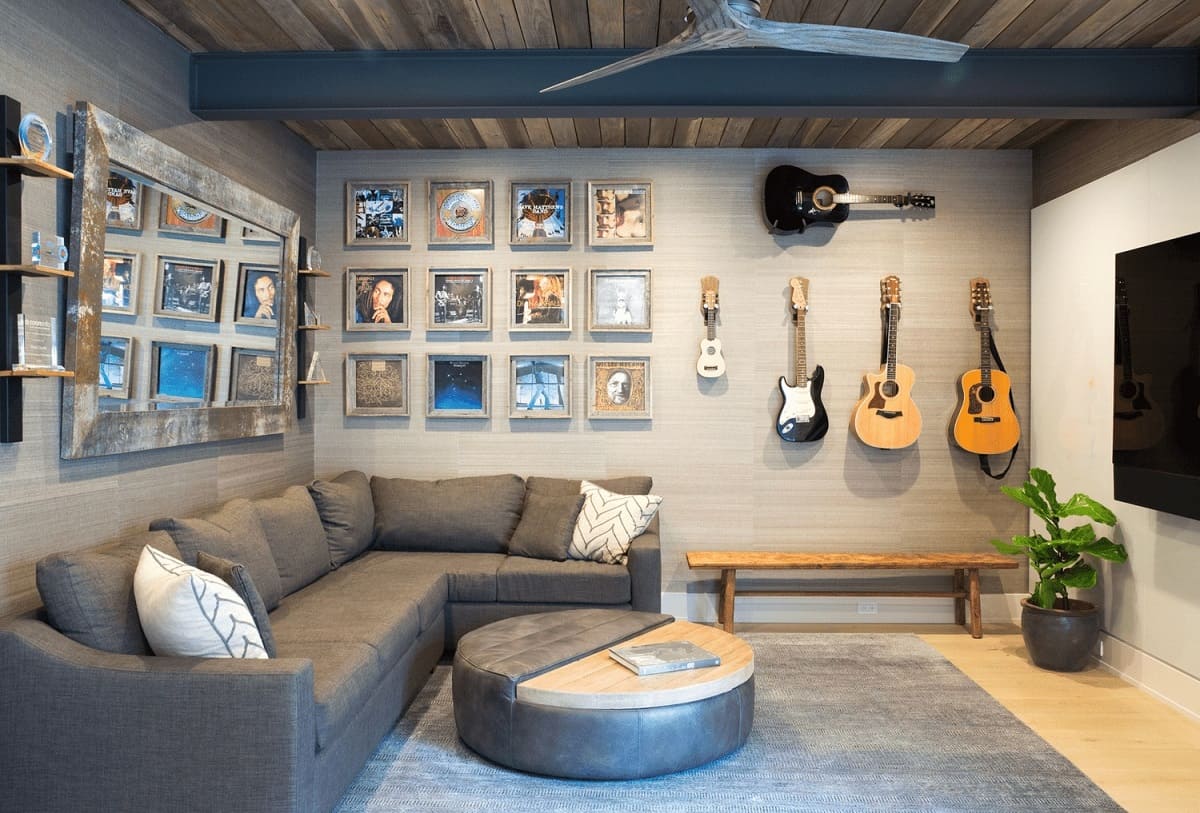
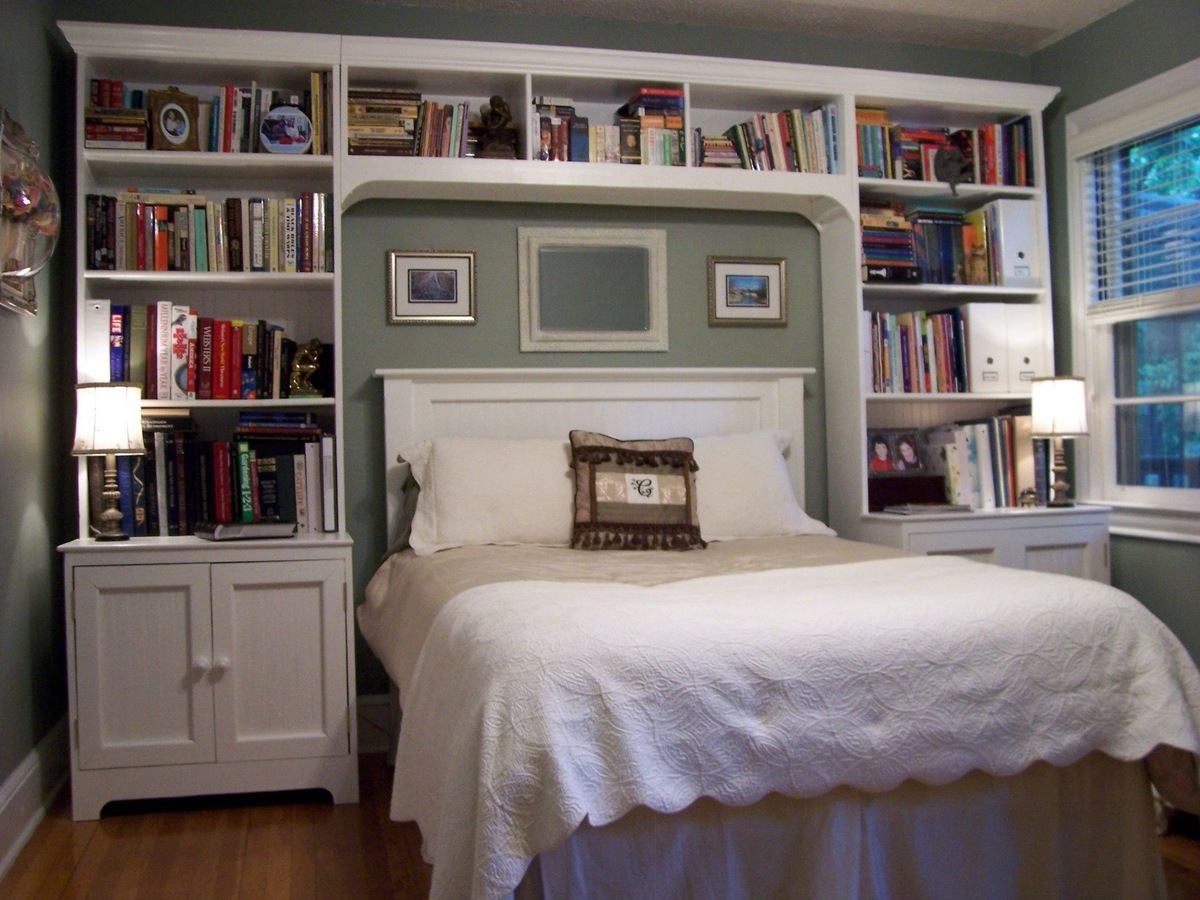
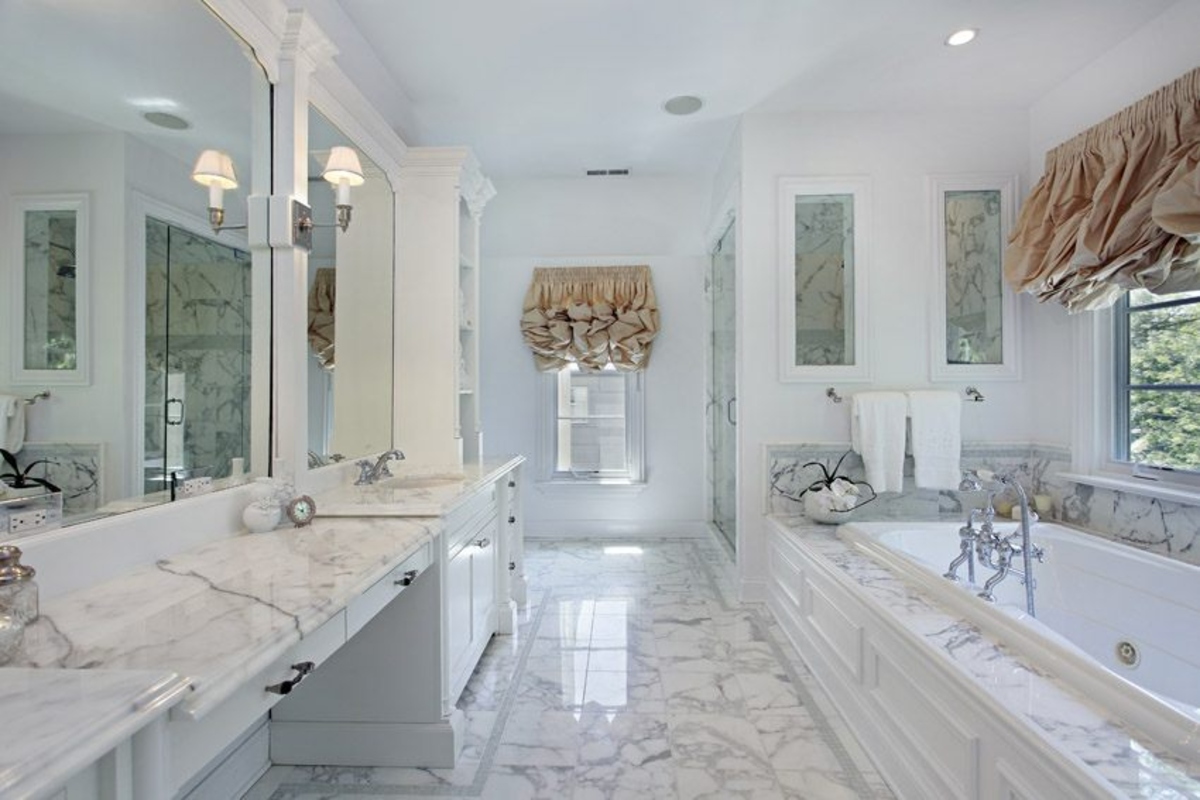
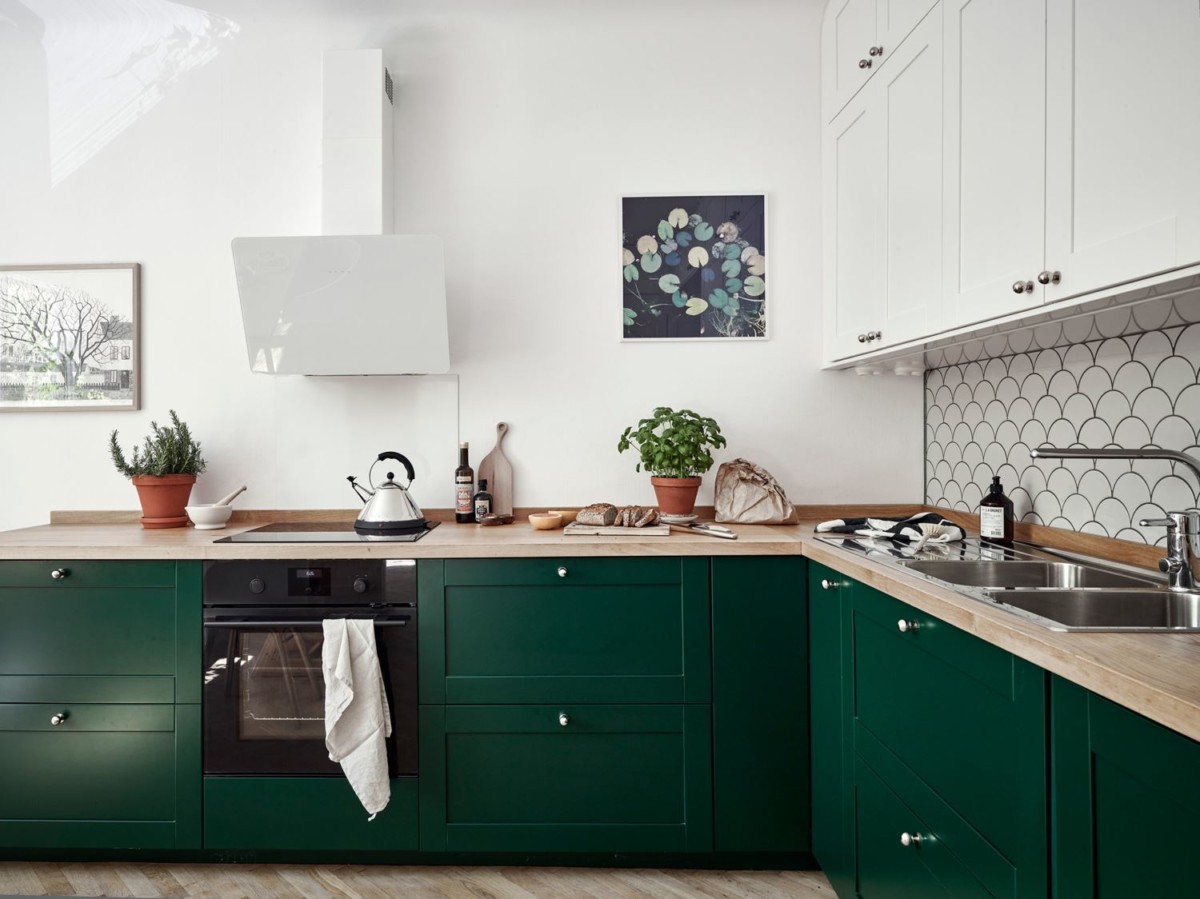

0 thoughts on “Zen Bedroom Ideas: 10 Blissful Schemes For Rest”